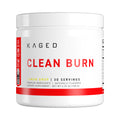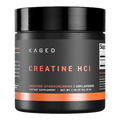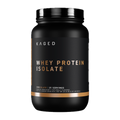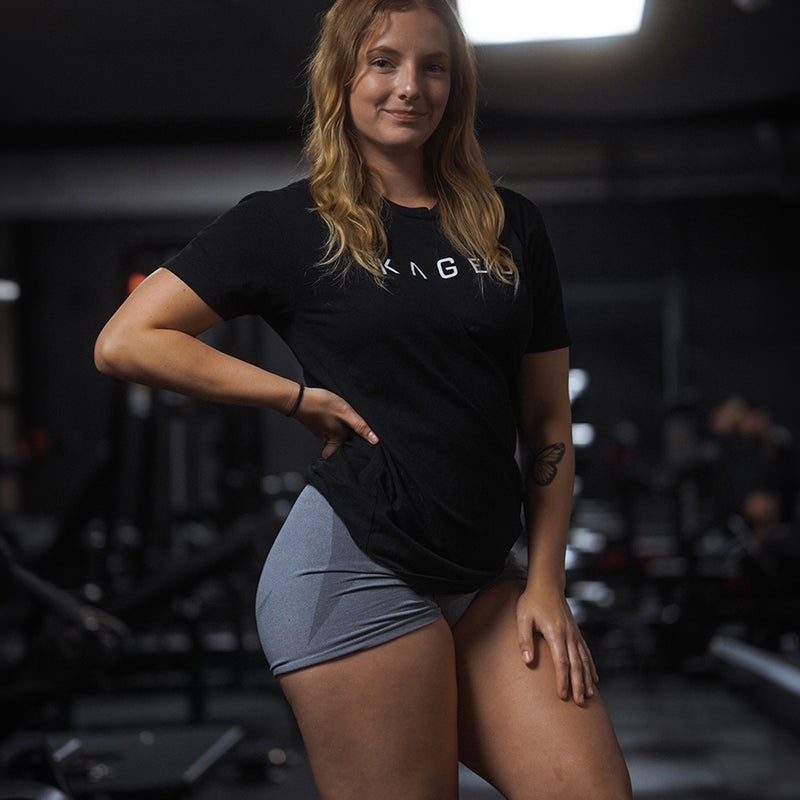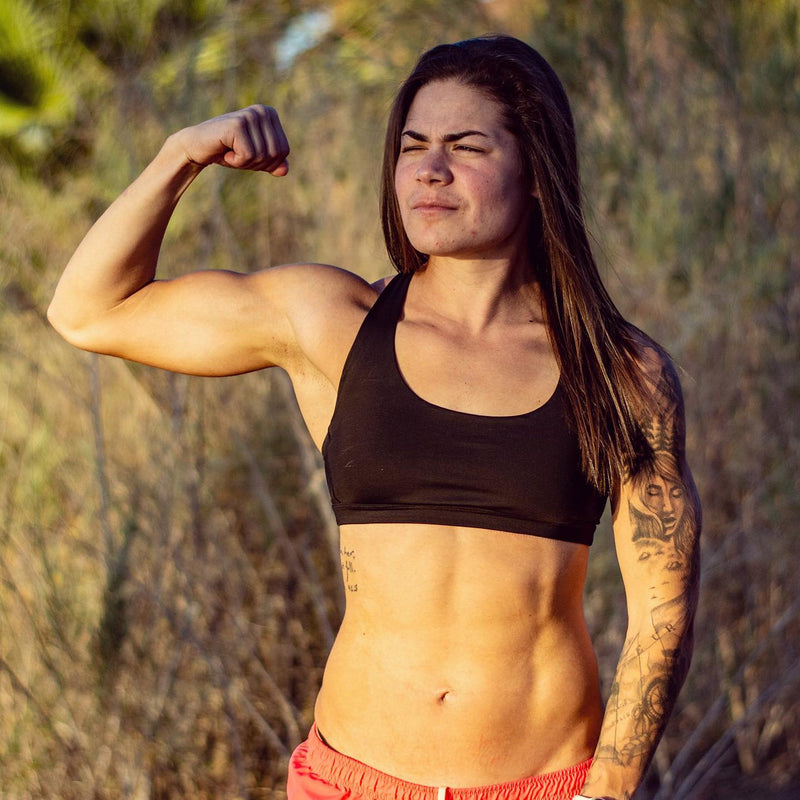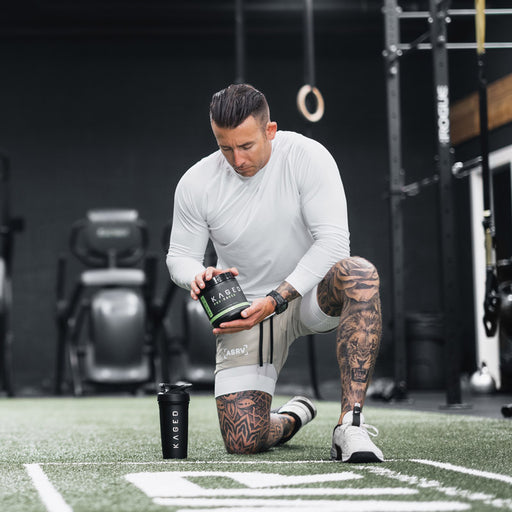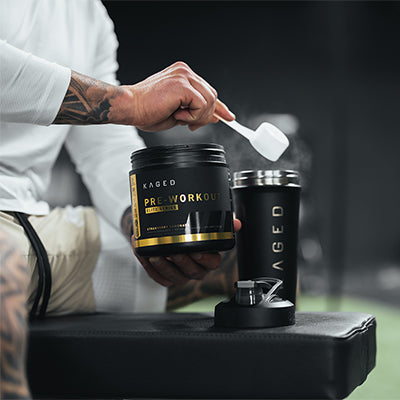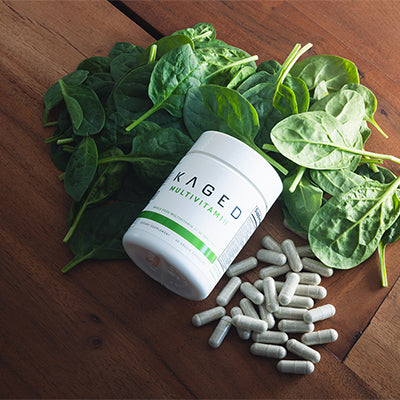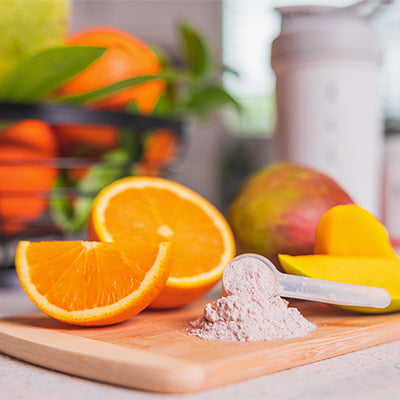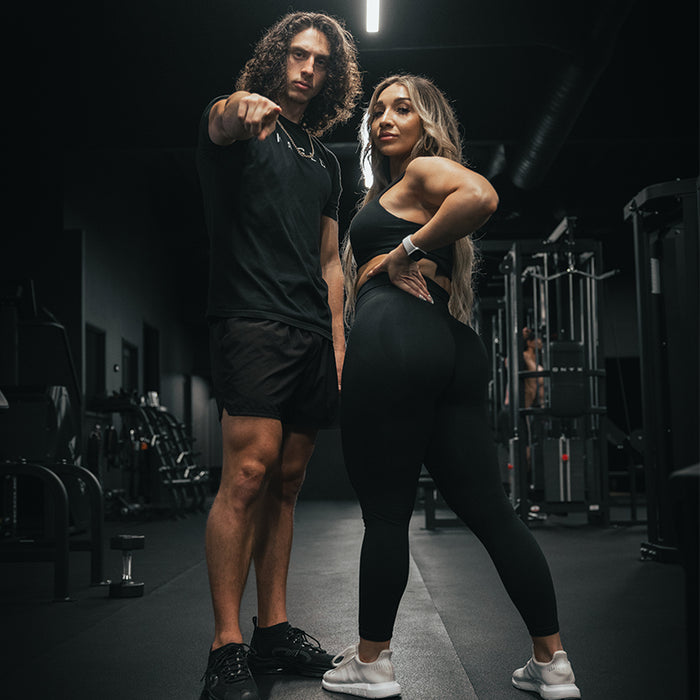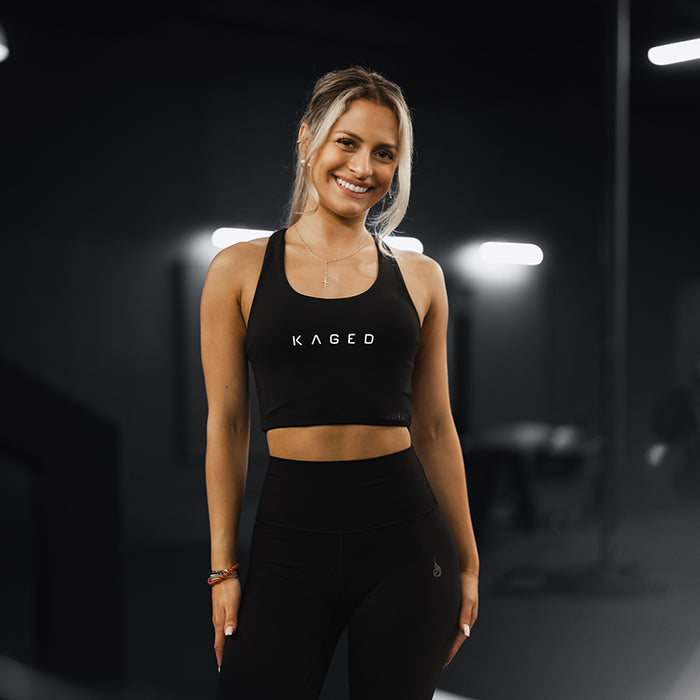Citrulline is one of the most popular supplement ingredients to improve muscle pumps, which can in turn help strengthen your mind-muscle connection. This makes it one of the most potent and popular pre-workout supplements.
It also promotes blood flow during training which supports recovery and nutrient delivery.*
This combination of benefits makes it an ideal pre-workout ingredient.
But there are two main forms of citrulline that you'll see in pre-workouts: L-Citrulline and Citrulline Malate.
We only use pure L-Citrulline, never malate in our line of award-winning pre-workouts.
In this article we're going to explain why L-Citrulline is simply the superior choice compared to citrulline malate.

How Citrulline Supports Muscle Pumps
Citrulline supports pumps by increasing the body’s nitric oxide (NO) production during training. NO is a minuscule gas molecule that encourages your blood vessels to relax, allowing a greater flow of blood and nutrients to your working muscles. This leads to better pumps, greater muscle activation, and better recovery.
One of the best ways to boost nitric oxide production is to supplement with citrulline. But it comes in two popular forms: L-Citrulline and Citrulline Malate. Which one is better for muscle pumps, recovery, and performance in the gym?
What Is Citrulline and Where Does it Come From?

Citrulline is a non-essential amino acid that was first isolated from watermelon. In fact, its name comes from citrullus lanatus, the Latin term for this popular melon fruit. Non-essential amino acids, including citrulline, can be made by the human body. But our bodies don’t make citrulline in the quantity that supports optimal muscle pumps.
Second, because citrulline is not a constituent of proteins, dietary proteins don’t give you a direct source of this amino acid for the body, either. That means you won’t get significant amounts of it from the protein foods you consume.
This makes supplementation the best option to support long-lasting muscle pumps, improve muscular endurance, and reduce muscular fatigue.*
The Differences Between L-Citrulline and Citrulline Malate
Citrulline malate is not the same as pure L-citrulline. At its core, the difference comes from the fact that, as the names imply, L-citrulline is a pure form of citrulline, while citrulline malate molecules have malate as well.
Here are the biggest differences to think about when deciding on a citrulline supplement.
L-Citrulline Has Twice as Much Citrulline by Volume.
Citrulline malate is a blend (usually 1:1) of citrulline and malic acid (malate). So, if you take 2 grams of a 1:1 blend of citrulline malate, you’re only getting about 1 gram of pure citrulline by weight and about 1 gram of malic acid.
With citrulline malate products, you’re only getting about half of the citrulline compared to l-citrulline products
Malate Supplementation Does NOT Lead to Improved Energy Production
You can find malate in many sour fruits, such as green apples and sour grapes. In the body, malate is an intermediate in the Krebs cycle (i.e., the citric acid cycle), giving it an important role in ATP (energy) production.
Its role in the Krebs cycle is what some brands capitalize on when promoting citrulline malate as superior to pure L-citrulline. However, malate doesn't appear to be a rate-limiting substrate in the Krebs cycle. This is probably why there’s a lack of peer-reviewed scientific evidence showing that pre-workout malate supplementation (on its own) results in greater ATP/energy production during exercise.
Simply, malate alone has not been demonstrated by research to provide the training benefits, while citrulline itself has. When you “cut” citrulline with malate, you’re getting less of the supplement that best supports NO production and muscle pumps.
What to Consider When Choosing Between L-Citrulline and Citrulline Malate
Here are other important considerations to compare citrulline products.
1) Knowing the Ratio
In order to know exactly how much L-citrulline you are getting from citrulline malate, you must know and trust the ratio of the blend. This ratio probably will not be disclosed on the label (rendering it the same as a proprietary blend).
This leaves you with no idea how much of this blend contains actual citrulline. Remember, it’s the “citrulline” in “citrulline malate” that produces the nitric oxide increases that lead to muscle pumps, and increases exercise performance.
2) Malate costs less, so brands use it more
Malate is less expensive than pure citrulline. So, gram-for-gram citrulline malate costs far less to formulate. This is why many supplement companies promote the use of citrulline malate over citrulline: It increases profit margins by diluting the most expensive ingredient: l-citrulline.
If malate provides performance benefits, why not just formulate it as a separate ingredient and list exactly how much L-citrulline and malate the product has per serving? Almost no product does that because malate alone has no proven benefits for supporting muscle endurance, increased pumps, or recovery.
Not All L-Citrulline Is Created Equal: What to Look For
Just because L-Citrulline is the more pure form compared to citrulline malate, doesn’t mean every l-citrulline product is created equal. Here are a few factors to look for when choosing an l-citrulline product.
Third-Party Tested
The supplement industry is notoriously filled with crap, despite FDA’s best efforts to regulate it. This means companies can (and do) put ingredients in their supplements that aren’t on the label, even though that’s illegal.
Fortunately, now there are stricter third-party testing options. But companies have to do this on their own accord. If they’re not going through third-party testing, you have no idea that what you’re getting is safe.
Athletes: Choose an LGC Certified Informed Sport Product
Even with cGMP requirements, there are tons of stories of NCAA, professional, and Olympic athletes who bought supplements that had ingredients that got them banned from sports.
So if you’re an athlete, make sure you take this a step further and look for the LGC Informed Sport marker.
Vegan and From Quality Sources
Most supplement companies try to cut corners for profit. For example, if they can get amino acids from cheap, low quality sources, they often will.
They hide where it comes from by using the term “animal by-product,” which doesn’t sound so bad. But this means that they source it from the absolute scraps of slaughtered animals. Their aminos can come from carcasses, bird feathers, and other sketchy sources.
Obviously, this is not what you should be putting in your body. Instead, look for l-citrulline that comes from plant sources.
Kaged Pure L-Citrulline
At Kaged, we ourselves only want to put the purest and highest quality ingredients in our body.
That’s why we create our products. We seek out the best ingredients and supplement formulations, with full-disclosure labeling, no proprietary blends, strict third-parting testing, and science-backed key ingredients.
We created our l-citrulline product to address these problems. It’s Informed Sport certified, vegan, fermented, 100% pure l-citrulline (ZERO malate). Backed by hundreds of 5-star reviews, it will help you increase your pumps and recovery, therefore helping you improve performance in the gym and ultimately build more muscle.

SHOP NOW
This is also the form we use in all of our pre-workouts.

SHOP PRE-WORKOUT
How Does Citrulline Boost Nitric Oxide Production?
In the body, citrulline is formed in the urea cycle from ornithine and carbamoyl phosphate. The urea cycle is a natural process that rids the body of ammonia, lactic acid, and other harmful compounds, many of which are generated by stress, including intense weight-training sessions.
As such, taking supplemental citrulline enhances the removal of these toxic byproducts (ammonia, lactic acid) that accumulate during exercise.
The ammonia-sequestering effect of citrulline is believed to be one of the reasons why people notice less fatigue when they supplement citrulline before and during workouts
Citrulline is also synthesized in intestinal absorptive cells (called enterocytes) from amino acids including proline, arginine, and glutamine. In fact, most of the naturally occurring citrulline in our blood is formed from glutamine conversion through the glutamate to ornithine pathway in enterocytes (1). Still, the main purpose of this conversion is for basic physiological function. Again, the amount our bodies make isn’t enough to spur enhanced training benefits.
Once citrulline is in your system, your kidneys convert it to arginine (another amino acid). This increased blood-level of arginine boosts NO production. Then this gas promotes vasodilation, which leads to muscle pumps and better performance.
What About Arginine Supplementation?
If arginine does all that, why not just supplement it instead of citrulline? While your goal is to boost arginine production, citrulline is better at boosting arginine levels than directly supplementing with arginine. That’s because your gut and liver contain enzymes called arginases, which break down and eliminate supplemental arginine. That means citrulline supplementation is more beneficial in elevating blood arginine and nitric oxide (NO) than arginine itself (2).
We write more about this in this article on l-citrulline vs l-arginine.

